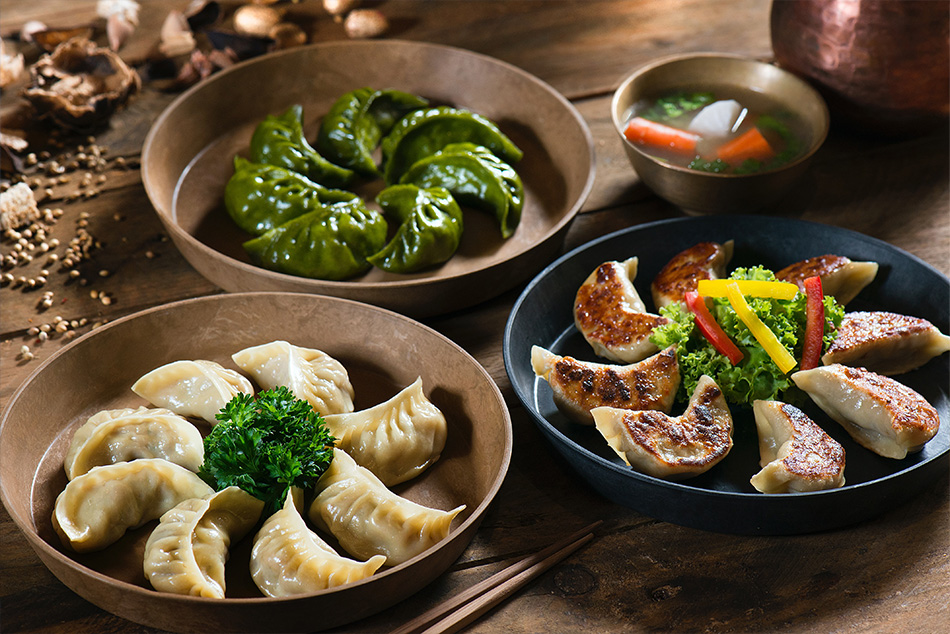Tibet Travel Tips for Vegetarian Tourists. Tibet, a mystical land nestled amidst awe-inspiring landscapes and steeped in a rich and vibrant cultural heritage, has beckoned travelers for generations. The allure of this high-altitude plateau is undeniable, with its majestic Himalayan peaks, tranquil monasteries, and spiritual mystique. However, for vegetarians, this journey to the “Roof of the World” can present a unique set of challenges.
The heart of Tibetan cuisine beats to the rhythm of meat, dairy, and barley, where yaks roam the vast, breathtaking landscapes and mutton stews simmer in cozy kitchens. This meat-centric diet reflects not only the cultural traditions but also the practicality of survival in the harsh Tibetan terrain.
In this comprehensive Tibet travel guide, we will delve into the art of traversing Tibet as a vegetarian, ensuring that your voyage is not only a culinary adventure but a soul-enriching experience. We will provide you with a treasure trove of travel tips, an extensive list of vegetarian-friendly options, and a deep dive into the cultural nuances that underpin Tibet’s food culture.
Join us as we embark on a journey through Tibet, where we unlock the secrets to not only surviving but thriving as a vegetarian traveler. It’s a voyage that promises to tantalize your taste buds, broaden your horizons, and create unforgettable memories in the Land of Snows.
Understanding Tibetan Dietary Customs
The Traditional Diet
The culinary traditions of Tibet are like no other, deeply intertwined with the culture and environment that shapes the lives of its people. As you venture into the heart of this extraordinary land, understanding the roots of its traditional diet is essential.
Tibet’s rugged and unforgiving terrain, characterized by high altitudes and severe weather conditions, has bestowed unique challenges upon its inhabitants. The limited arable land and a scarcity of vegetables make cultivation a formidable task. As a result, the Tibetan diet has evolved to revolve around ingredients that can withstand these extreme conditions.
Yaks, the Mighty Beasts of Tibet: Central to the Tibetan diet are yaks, revered as the “ships of the plateau.” These robust animals provide not only transportation and shelter but also a significant portion of the region’s dietary sustenance. Yak meat, tender and lean, serves as a vital source of protein for the Tibetan people. Additionally, yak butter is a staple, used generously in traditional Tibetan butter tea, providing the necessary caloric intake to combat the harsh climate.
Mutton and Goat Meat: In the higher elevations, where yaks are less prevalent, mutton and goat meat play crucial roles. These meats are not only sources of sustenance but also integral elements in Tibetan rituals and celebrations. The meats are often incorporated into hearty stews and dishes that warm the body and soul in the biting cold of the Tibetan winters.
The Scarcity of Vegetables: The scarcity of arable land in Tibet restricts the cultivation of vegetables. While some vegetables can be grown in certain regions, they remain a rare commodity and are not commonly found in traditional Tibetan meals. This challenge has been a driving force behind the adaptation of the Tibetan diet, where grains like barley and wheat, combined with animal products, form the dietary bedrock.
As you embark on your journey through Tibet, keep in mind that this unique dietary culture is a testament to the resilience and resourcefulness of the Tibetan people. It is a reflection of their harmonious coexistence with the environment, where every meal tells a story of survival, culture, and a deep-rooted connection to the land they call home.
Religious Beliefs
In the heart of Tibet, where spirituality is as pervasive as the awe-inspiring landscapes, religion isn’t just a facet of life; it’s a way of life. Tibetan Buddhism, with its unique interpretations and practices, shapes not only the spirituality but also the culinary choices of the Tibetan people.
A Unique Branch of Buddhism: Tibetan Buddhism stands as a distinctive branch of this ancient religion. Unlike many other sects of Buddhism that embrace vegetarianism as a core tenet, Tibetan Buddhism follows a different path. Within its teachings lies the concept of “clean meat.” This notion allows Tibetan Buddhists to partake in the consumption of meat, provided certain conditions are met.
The Doctrine of “Clean Meat”: The idea of “clean meat” in Tibetan Buddhism hinges on the belief that all living beings have the potential for enlightenment. Therefore, it is permissible to consume the flesh of animals as long as the animal wasn’t killed specifically for the person’s consumption. In other words, if the meat is acquired without causing harm or suffering to the animal, it is considered morally acceptable.
Monks and “Clean Meat”: One of the most intriguing aspects of Tibetan Buddhism is that it permits monks to consume meat. This allowance may seem perplexing to those familiar with the vegetarian principles upheld by many other Buddhist sects. However, for Tibetan Buddhists, this practice aligns with their interpretation of “clean meat.” Monks can eat meat as long as it adheres to the ethical guidelines of the doctrine.
This unique perspective on dietary choices not only reflects the distinctive nature of Tibetan Buddhism but also underscores the practicality of life on the high Tibetan Plateau. In a land where resources are scarce and the environment is harsh, the concept of “clean meat” has evolved as a means of harmonizing spiritual beliefs with the demands of everyday life.
As you journey through Tibet, you will encounter the multifaceted relationship between religion and dietary customs. It is a testament to the rich tapestry of belief systems that shape the lives of the Tibetan people, where spirituality transcends the boundaries of monasteries and temples, extending into the everyday choices of what to eat and how to live.
Taboos on Meat
In Tibet, the culinary landscape is not only influenced by what is eaten but also by what is categorically avoided. The concept of dietary taboos in Tibet extends beyond mere preferences; it is deeply rooted in cultural, religious, and superstitious beliefs.
Fish – Off the Plate and Into the Water: Tibetans abstain from consuming fish, a practice tied to the unique Tibetan tradition of water burial. Water burial is a method of disposing of a loved one’s remains, and Tibetans believe that fish play a sacred role in this ritual. Eating fish is considered offensive to the gods and disturbs the cosmic balance.
Man’s Best Friend and Donkeys – Not on the Menu: Dogs are not only cherished companions but also serve essential roles in the daily lives of Tibetans, from herding livestock to providing protection. This close bond with dogs has led to a strict prohibition against consuming dog meat. Similarly, donkey and mule meat are considered unclean and are not part of the Tibetan diet. These taboos stem from cultural beliefs that these animals are highly valuable and respected in Tibetan society.
Horse Meat – A Matter of Preference: While horses hold a unique place in Tibetan culture, their meat isn’t necessarily taboo. Some Tibetans do consume horse meat, albeit it is not a common part of their diet. The preference for horse meat is not consistent across all regions and individuals.
Superstitions and Symbolism: Tibetan culture is rich in symbolism and superstitions, which play a significant role in dietary choices. For example, there is a belief that consuming certain types of meat can bring misfortune or illness. These superstitions further shape the dietary customs of Tibetans and contribute to the list of foods they avoid.
Navigating the intricate web of dietary taboos in Tibet can be both fascinating and challenging for the vegetarian traveler. It serves as a reminder that culinary choices in Tibet are not solely based on taste or nutrition but are deeply interwoven with a complex tapestry of cultural, religious, and superstitious beliefs that have been passed down through generations.
Vegetarian Food Options in Tibet
Tibetan Staples
Amidst the towering peaks and vast plateaus of Tibet, where the harsh terrain and unforgiving climate leave their indelible mark, lie the dietary cornerstones that have sustained the Tibetan people for centuries. These staples are not only essential for survival but also hold the key to accommodating the dietary preferences of vegetarian travelers.
Highland Barley – The Lifeblood of Tibet: Highland barley, often referred to as “tsampa,” stands as the quintessential staple of the Tibetan diet. Thriving at high altitudes and in challenging conditions, this grain is the lifeblood of the Tibetan people. It is used to make tsampa, a versatile and hearty dish that serves as a staple for both Tibetans and vegetarians. Tsampa is a simple mixture of roasted barley flour and butter tea, offering a rich source of nutrition in a challenging environment.
Wheat – A Versatile Option: Wheat is another vital staple in the Tibetan diet. It is used to create dishes like Balep (barley flatbread), a staple food that vegetarians can savor. Balep, comprised of barley flour, water, and baking powder, is cooked in frying pans and is a convenient option for a quick, filling meal.
Peas, Potatoes, Buckwheat, and Rape: While the scarcity of arable land poses a challenge for vegetable cultivation in Tibet, some regions are suitable for growing crops like peas, potatoes, buckwheat, and rape. These ingredients are integral to vegetarian travelers looking to diversify their meals. Dishes made from these staples can offer a change from the meat-centric Tibetan dishes.
As a vegetarian, exploring the culinary possibilities presented by Tibetan staples can be an enriching experience. These ingredients not only provide essential nutrients but also open doors to the flavors and traditions of Tibetan cuisine. Whether it’s the wholesome simplicity of tsampa, the hearty Balep, or dishes prepared with locally grown crops, these staples offer a glimpse into the resourcefulness and adaptability of the Tibetan people in their quest for sustenance in a challenging environment.
Traditional Tibetan Vegetarian Dishes
Tibetan cuisine, though traditionally centered around meat and dairy, offers a selection of vegetarian-friendly dishes that captivate the senses and provide a unique culinary experience for vegetarian travelers. Let’s dive deeper into these dishes and discover the delights they hold:
Balep – The Barley Flatbread: Balep, a simple yet hearty dish, is a staple for vegetarians in Tibet. This round, flatbread relies on barley flour, water, and baking powder. It can be cooked in any frying pan, making it a versatile and convenient option. Balep is not only a satisfying source of sustenance but also a delightful introduction to the essence of Tibetan cuisine.
Tsampa – The Energy Boost: Tsampa, also known as “highland barley flour,” is a versatile and nutritious dish that holds a special place in Tibetan culture. It is created by mixing roasted barley flour with Tibetan butter tea, which can be customized for vegetarian preferences. Tsampa serves as a compact, energy-boosting meal, making it a popular choice among nomadic people and travelers in Tibet. Its simplicity and nutritional value make it an ideal companion for vegetarian travelers exploring the highlands.
Tibetan Butter Tea (Without Yak Butter): Butter tea, a signature Tibetan beverage, is traditionally prepared by repeatedly boiling tea leaves, adding yak butter, and sometimes salt. For vegetarians, the option of enjoying Tibetan butter tea without yak butter is available. This adaptation allows you to experience the rich flavors of Tibetan tea culture without compromising your dietary preferences. The tea, enriched with the addition of traditional tea rolls, offers a taste of authenticity and warmth in the highlands of Tibet.
These traditional Tibetan vegetarian dishes are not only sources of sustenance but also gateways to the culture and traditions of the Tibetan people. As a vegetarian traveler in Tibet, embracing these dishes can be a deeply enriching experience, allowing you to savor the flavors and customs of this mystical land while staying true to your dietary choices.
Finding Vegetarian Food in Tibet
In Lhasa
The bustling heart of Tibet, Lhasa, the capital and largest city, is a destination where the old and the new blend seamlessly. It’s also a haven for vegetarian travelers, offering a variety of culinary delights to suit your dietary preferences. Let’s explore some of the vegetarian dining options in this vibrant city:
The House of Shambhala Restaurant: A hidden gem in the heart of Lhasa, The House of Shambhala Restaurant is a fusion of Western, Tibetan, Nepalese, and Indian cuisines. This charming eatery provides an extensive vegan menu that caters to a diverse range of tastes. From dishes like King’s Ethereal Greens to The King’s Dried and Fried Tofu, Mismas Trkari, Dal Jhanekol, and Kashmiri Pulao, you’ll find an array of tantalizing options that reflect the rich tapestry of flavors found in the region. Elephant Lotus, among other dishes, offers a taste of the exotic. The restaurant’s menu is a testament to the culinary diversity that Lhasa has to offer, even for vegetarian travelers.
Tibetan Family Kitchen: This inviting restaurant not only offers authentic Tibetan cuisine but also provides vegetarian options. You can relish dishes like momo (dumplings), tsampa, noodles, and more, ensuring that you can enjoy a taste of traditional Tibetan flavors while sticking to your dietary preferences. Tibetan Family Kitchen also offers low-fat dishes for those conscious of their diet. In addition to the delectable meals, they offer cooking classes, providing you with a unique opportunity to learn more about Tibetan food culture.
Dunya Restaurant: Dunya Restaurant is not only a dining establishment but also a place for relaxation and socializing. For vegetarians, it offers options like vegetarian soup, momo, fruit with yogurt, noodles, and more. Beyond the food, Dunya provides a space to meet fellow travelers, listen to good music, play darts, and enjoy some drinks, making it a hub for the city’s diverse and international clientele.
Lhasa, with its vibrant and evolving food scene, is a treasure trove for vegetarian travelers. These restaurants are just a glimpse of the rich variety of vegetarian-friendly options that Lhasa has to offer. Exploring the culinary landscape of Lhasa can be an adventure in itself, filled with an array of flavors that celebrate the unique cultural blend of this extraordinary city.
Outside Lhasa
As you journey beyond the bustling streets of Lhasa and delve deeper into the remote corners of Tibet, you may find that vegetarian restaurants become less prevalent. However, fear not, for even in the more distant reaches of this mesmerizing land, opportunities to savor vegetarian dishes await those with an inquisitive palate. Here’s what you can look forward to outside of Lhasa:
Mouthwatering Momos: Momos, the beloved Tibetan dumplings, are a ubiquitous treat in Tibet. These delectable parcels of joy come in various fillings, including vegetarian options. Beyond Lhasa, in towns and villages, small eateries and local kitchens often offer momos with vegetable fillings. Simply inform the cook about your dietary preference, and they will be happy to prepare a batch of vegetarian momos for you.
Tsampa – The Universal Staple: Tsampa, the barley flour mixture blended with Tibetan butter tea, is a beloved and convenient dish enjoyed by both locals and travelers. While meat-based tsampa is common, it’s possible to request vegetarian versions, which typically exclude the meat component. This dish, although simple in its preparation, is nutritious and sustaining, making it an ideal choice for vegetarians on the move.
Soups, Fried Rice, and Noodles: In towns outside Lhasa, small restaurants and local eateries often offer dishes like soups, fried rice, and noodles. These dishes can easily be prepar with vegetable-based ingredients upon request. Vegetarians can enjoy these hearty and flavorsome meals by communicating their dietary preferences to the cook.
Exploring the culinary landscape beyond Lhasa offers a chance to experience the more rustic and traditional aspects of Tibetan cuisine. While vegetarian restaurants may be scarce, the adaptability of Tibetan chefs and their willingness to cater to dietary preferences make it possible to enjoy a variety of vegetarian dishes. Your journey through these remote areas not only unveils the breathtaking landscapes but also the warm hospitality of the Tibetan people who are more than willing to accommodate your culinary choices.
Planning Ahead
Informing Your Tour Operator
When embarking on a journey through Tibet, especially if you’ve chosen to explore this mesmerizing land with a tour operator, effective communication is key. Your dietary requirements as a vegetarian are not just a preference; they are an essential part of your travel experience. Here’s why it’s important to inform your tour operator in advance:
Tailored Recommendations: Tour operators with experience in the region are well-versed in the local culinary landscape. By informing them of your dietary preferences ahead of time, they can recommend suitable restaurants that cater to vegetarians. This local knowledge is invaluable in ensuring that your dining experiences align with your dietary choices.
Arranging Vegetarian Meals: In cities where vegetarian restaurants are less common, your tour operator can work their magic and arrange for vegetarian meals at suitable establishments. This proactive approach not only saves you the hassle of searching for suitable food but also ensures you have delicious and nutritious meals throughout your journey.
Cultural Sensitivity: Tibet is a land where culture and tradition play a significant role in daily life. By informing your tour operator, they can help ensure that your dietary preferences are communicated with cultural sensitivity to local chefs and hosts. This ensures that your dietary choices are respected and accommodated in a way that aligns with the local customs.
Enhanced Travel Experience: Traveling with a tour operator offers a host of advantages, including the ability to tailor your journey to your preferences. By notifying them of your dietary requirements, you contribute to a seamless and enjoyable travel experience, ensuring that your focus remains on exploring the breathtaking landscapes and immersing yourself in the rich culture of Tibet.
In the Land of Snows, where every aspect of life is intertwined with tradition and spirituality, traveling as a vegetarian is not just about the food you eat but also about the respect and understanding you extend to the local customs. By informing your tour operator of your dietary requirements, you pave the way for a more enriching and harmonious journey through this captivating destination.
On the Journey
Your voyage to Tibet is not only about the destination but also the journey itself, which can be an adventure filled with breathtaking vistas and unique experiences. Here are some essential tips for ensuring that you have a satisfying culinary experience during your journey:
Pre-Flight and Pre-Train Arrangements: Whether you’re taking a flight or a train to Tibet, it’s essential to make prior arrangements for vegan or vegetarian meals. Many airlines offer vegan meal options, so be sure to request this when booking your ticket. If you’re taking a train, inquire about the availability of vegetarian options and make your preferences known during the booking process.
Pack Vegan Snacks: While most flights and trains offer meals, it’s a good idea to pack some vegan snacks for your journey. Lightweight snacks like dried fruits, nuts, vegan bars, and even some vegan chocolate can come in handy during long journeys. These snacks not only provide sustenance but also offer a convenient and quick way to curb hunger pangs.
Fruit for Refreshment: If you’re prone to motion sickness during train journeys, consider packing some fruits like grapefruits, oranges, or tangerines. Not only do these fruits offer a refreshing burst of flavor, but they can also help alleviate motion sickness and keep you feeling revitalized during the journey.
Dining on Trains: Tibetan trains offer three meals a day, and most of them feature Chinese cuisine. While the options may not always align with vegetarian preferences, you can make specific requests. For breakfast, ask for vegetable-filled steamed buns, soy milk, pickles, and porridge. For lunch and dinner, request stir-fried dishes with less spicy flavors to suit your palate.
By making these arrangements and packing appropriate snacks, you can ensure that your journey to Tibet is not only comfortable but also delicious. After all, traveling to the “Roof of the World” should be a holistic experience, and that includes enjoying your meals as you traverse the stunning landscapes on your way to your dream destination.
Conclusion of Tibet Travel Tips for Vegetarian Tourists
In conclusion, embarking on a journey to Tibet as a vegetarian is not merely an exercise in accommodating dietary preferences; it’s an invitation to explore a world where culture, tradition, and nature converge in every meal. Your voyage to the “Roof of the World” is an opportunity to savor not just the breathtaking landscapes and vibrant culture but also the rich tapestry of flavors that define Tibetan cuisine.
By delving into the local customs, understanding the culinary taboos, and embracing the dietary staples of Tibet, you can unlock a world of gastronomic wonders. From traditional vegetarian dishes like tsampa and Tibetan butter tea to exploring the offerings of vegetarian-friendly restaurants in Lhasa and beyond, your taste buds are in for an adventure.
Informing your tour operator in advance ensures that your dietary preferences are seamlessly accommodated, and on the journey, whether by flight or train, your arrangements for vegan or vegetarian meals and your choice of snacks will keep you satiated as you traverse this extraordinary land.
Traveling as a vegetarian in Tibet is not just possible; it’s a chance to savor unique culinary experiences that mirror the resilience and resourcefulness of the Tibetan people. It’s an opportunity to appreciate not just the food but also the profound connection between culture, spirituality, and the sustenance that shapes life on the high plateau.
As you venture into Tibet, remember that your dietary choices are not a hindrance but a bridge that connects you to a land where every meal tells a story, every dish reflects a way of life, and every flavor invites you to be a part of a timeless journey. So, come and explore the wonders of Tibet as a vegetarian, and let the culinary traditions of this extraordinary land become a cherished part of your unforgettable experience.
Now, with this knowledge in hand, you’re ready to embark on your vegetarian journey through Tibet, and we wish you a truly enriching and flavorful adventure in this mystical destination.
Frequently Asked Questions (FAQs) of Tibet Travel Tips for Vegetarian Tourists
Is it difficult to find vegetarian food in Tibet?
The quest for vegetarian food in Tibet is not without its challenges, but it’s a journey well worth undertaking. Here’s a deeper exploration of this commonly asked question:
Variability by Region: The availability of vegetarian food can vary significantly depending on the region you’re exploring. In bustling cities like Lhasa, vegetarian-friendly restaurants are more common, offering a diverse range of options. However, as you venture into rural areas, finding vegetarian dishes may become more challenging. It’s essential to plan your meals accordingly based on your itinerary.
The Right Restaurants: While Tibet is traditionally known for its meat-centric cuisine, there are restaurants that cater to vegetarians. By doing some research and asking for recommendations, you can discover eateries that offer delightful vegetarian options. In Lhasa, for instance, you’ll find a variety of restaurants with extensive vegetarian menus, making it a more straightforward experience. In smaller towns and villages, you can still enjoy dishes like momos (dumplings) with vegetable fillings and simple yet hearty vegetarian soups.
Cultural Sensitivity: Tibetans are known for their hospitality, and they are often willing to accommodate dietary preferences. By communicating your dietary requirements clearly and respectfully to local chefs or hosts, you can often enjoy delicious vegetarian meals prepared with care and consideration.
Tour Operators: If you’re traveling with a tour operator, as mentioned earlier in the guide, they can assist in finding suitable restaurants and making arrangements for vegetarian meals, which can alleviate some of the challenges.
In summary, while it may be more challenging to find vegetarian food in Tibet compared to some other destinations, with careful planning and an openness to explore local options, you can indeed savor a variety of vegetarian dishes that offer a taste of the region’s culinary traditions. Your journey through Tibet can be an adventure in discovering new flavors, all while respecting the local customs and traditions.
What are some traditional Tibetan vegetarian dishes?
Traditional Tibetan cuisine, though predominantly meat-based, offers a handful of delightful vegetarian dishes that are deeply rooted in the region’s culture and heritage. Let’s take a closer look at these traditional Tibetan vegetarian dishes:
Balep – The Nourishing Flatbread: Balep, a simple yet fulfilling staple of Tibetan cuisine, is a versatile vegetarian dish. This round, flatbread is made from barley flour, water, and baking powder. Its preparation is uncomplicated, making it a convenient option for travelers. Whether enjoyed on its own or paired with other vegetarian accompaniments, Balep provides sustenance and a taste of traditional Tibetan flavors.
Tsampa – The High-Energy Classic: Tsampa, also known as “highland barley flour,” is an iconic Tibetan dish that vegetarian travelers can relish. It’s prepared by mixing roasted barley flour with Tibetan butter tea. While the traditional version may include meat, it’s entirely feasible to request a vegetarian version that excludes the meat component. Tsampa is not only nutritious but also a source of quick energy, making it a beloved dish for both locals and nomadic people.
Tibetan Butter Tea (Without Yak Butter): Tibetan butter tea, a quintessential Tibetan beverage, is a rich and warming drink traditionally prepared by boiling tea leaves, yak butter, and sometimes salt. For vegetarians, the option of enjoying Tibetan butter tea without yak butter is available. This adaptation allows you to experience the traditional tea culture of Tibet while adhering to your dietary preferences. The tea, enhanced by the addition of traditional tea rolls, offers a taste of authenticity and warmth in the highlands of Tibet.
These traditional Tibetan vegetarian dishes offer not only sustenance but also a connection to the rich culinary heritage of the region. They are a testament to the resourcefulness of the Tibetan people in utilizing the ingredients available in their challenging environment to create dishes that are both nutritious and flavorsome. As a vegetarian traveler in Tibet, exploring these dishes is an invitation to discover the harmonious blend of culture and cuisine that defines the heart of this mystical land.
Do Tibetans have any dietary taboos?
Tibetan cuisine, like any other, carries a set of dietary taboos that are influenced by cultural, religious, and superstitious beliefs. Let’s delve into these dietary taboos and understand the reasons behind them:
Fish: Fish is notably absent from the Tibetan diet, primarily because of the Tibetan Buddhist practice of water burial. This means that many Tibetans have a strong reverence for water and believe that fish are the offspring of dragons. Consuming fish is therefore seen as offensive and disrespectful to these beliefs.
Dog Meat: Tibetan culture has a deep-rooted connection with dogs, which have been one of the earliest domesticated animals in Tibet. Dogs serve not only as loyal companions but also as invaluable helpers in the daily lives of the Tibetan people. As a result, eating dog meat is strictly avoided, and it’s considered both culturally and religiously inappropriate.
Donkey, Mule, and Horse Meat: Tibetans also refrain from eating donkey, mule, and horse meat. These animals have specific roles and preferences in Tibetan society. Horses, for instance, are highly valued and are an integral part of Tibetan culture. Eating them is deemed disrespectful to their significance.
Superstitious Beliefs: Beyond cultural and religious reasons, some dietary taboos in Tibet stem from superstitions. Tibetans believe that consuming certain types of meat can bring misfortune or negative energy. This belief is an example of how local customs and folklore contribute to the dietary choices of the Tibetan people.
Understanding these dietary taboos is not only essential for travelers but also a way to respect and appreciate the deep-rooted traditions and beliefs of the Tibetan people. It’s a reminder that cuisine in Tibet is not just about sustenance; it’s an integral part of the culture and spirituality of this remarkable land.
Can I inform my tour operator about my dietary preferences?
Absolutely, and it’s not just advisable; it’s highly recommended to inform your tour operator about your dietary preferences before embarking on your journey to Tibet. Here are some compelling reasons why this is a valuable step in ensuring a smooth and enjoyable trip:
Tailored Restaurant Recommendations: Tour operators with experience in the region have an in-depth understanding of the local culinary landscape. By notifying them of your dietary requirements, they can recommend suitable restaurants that cater to vegetarians or places where you can find vegan or vegetarian dishes. This local insight is invaluable in ensuring that your dining experiences align with your dietary choices.
Arranging Vegetarian Meals: In cities where vegetarian restaurants may be less common, your tour operator can take the initiative to arrange for vegetarian meals at suitable establishments. This proactive approach not only saves you the hassle of searching for appropriate food but also guarantees that you have delicious and nutritious meals throughout your journey.
Cultural Sensitivity: Tibet is a place where culture, tradition, and spirituality play a significant role in daily life. By informing your tour operator, they can help ensure that your dietary preferences are communicated with cultural sensitivity to local chefs and hosts. This ensures that your dietary choices are respected and accommodated in a way that aligns with the local customs.
Enhanced Travel Experience: Traveling with a tour operator offers numerous advantages, including the ability to customize your journey to your preferences. By notifying them of your dietary requirements, you contribute to a seamless and enjoyable travel experience. This ensures that your focus remains on exploring the breathtaking landscapes and immersing yourself in the rich culture of Tibet.
In the land of the Himalayas, where every aspect of life is intertwined with tradition and spirituality, traveling as a vegetarian is not just about the food you eat but also about the respect and understanding you extend to the local customs. By informing your tour operator of your dietary requirements, you pave the way for a more enriching and harmonious journey through this captivating
What should I pack for my journey to Tibet as a vegetarian?
As you prepare for your unforgettable journey to Tibet as a vegetarian, packing the right snacks can make a significant difference in your travel experience. Here’s a more in-depth look at what you should consider including in your travel essentials:
Vegan Snacks: Dried fruits, nuts, and vegan bars are your best companions during your travels in Tibet. These snacks are lightweight, non-perishable, and provide essential nutrients, making them a perfect choice for a journey through the highlands. Nuts are a great source of protein and healthy fats, while dried fruits offer natural sweetness and energy. The Vegan bars are often packed with a variety of ingredients, from grains to seeds, offering a balanced and convenient snack option.
Vegan Chocolate: A little indulgence on your journey can go a long way. This chocolate is widely available and can be a delightful treat when you’re in need of a quick energy boost or simply craving something sweet. Make sure to pack some vegan chocolate to satisfy those occasional cravings while traveling.
Fruit for Motion Sickness: If you’re prone to motion sickness during train journeys, consider packing some fruits like grapefruits, oranges, or tangerines. These fruits are not only refreshing but can also help alleviate motion sickness and keep you feeling revitalized during the journey.
Reusable Water Bottle: Staying hydrated is crucial in Tibet’s high-altitude environment. Be sure to pack a reusable water bottle to fill up along the way. This not only helps you stay refreshed but also minimizes single-use plastic waste.
With these essentials in your travel backpack, you can rest assured that you have suitable and nourishing food options to keep you energized and satisfied throughout your journey in Tibet. While exploring the mesmerizing landscapes and vibrant culture of the region, you’ll have the peace of mind knowing that your dietary preferences are well-catered for.














